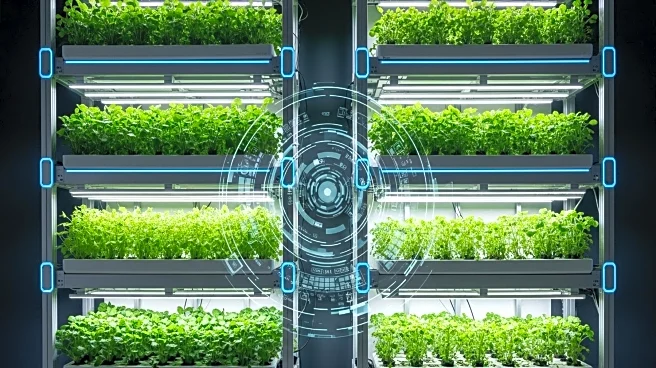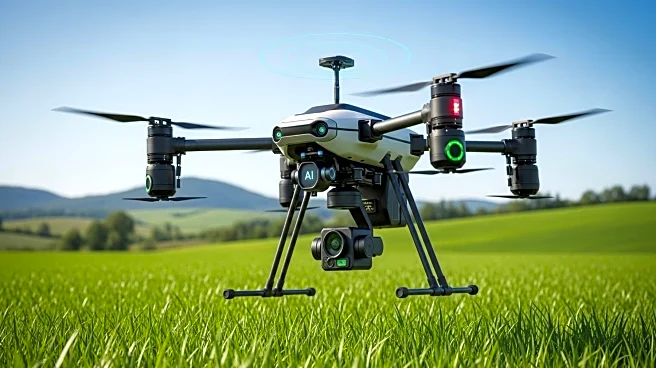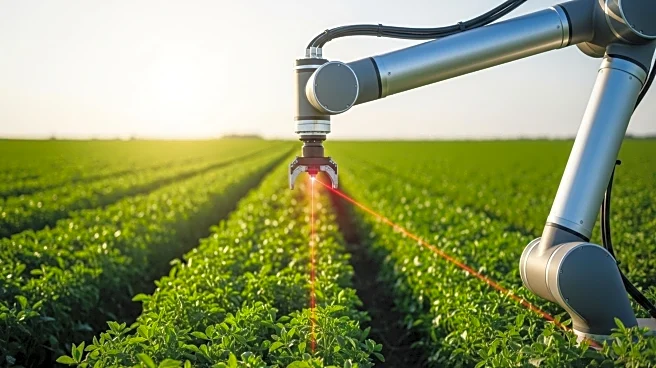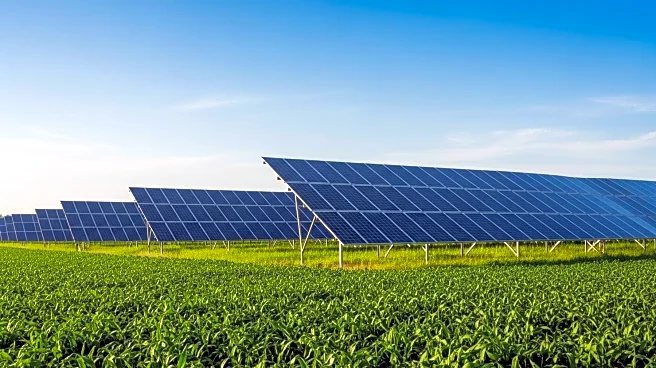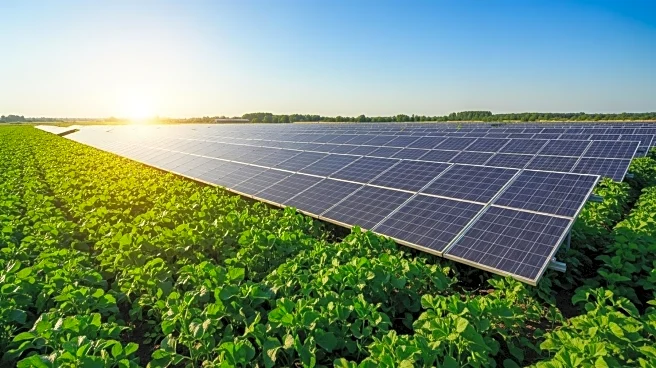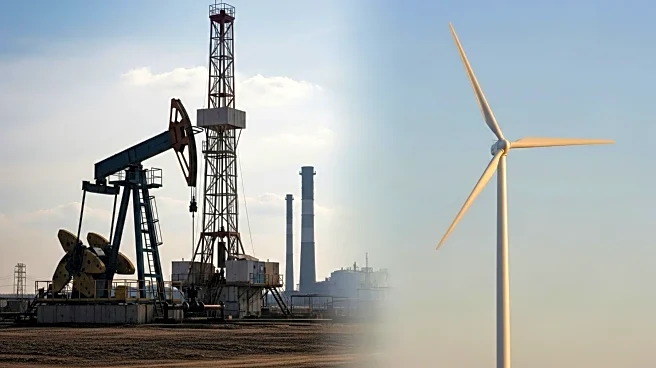What's Happening?
The global vertical farming market is projected to grow at a compound annual growth rate (CAGR) of 24.6% from 2024 to 2031. This growth is driven by the need for sustainable food production systems due to shrinking arable land and resource depletion. Vertical farming utilizes stacked growth systems, hydroponics, and aeroponics to cultivate food in controlled environments, ensuring consistent yields with minimal resource consumption. The integration of AI and Generative AI (GenAI) is enhancing efficiency and automating operations in vertical farming, making it more profitable and ecologically sound. The U.S. market is expected to grow at a 19.5% CAGR, driven by the integration of renewable energy sources.
Why It's Important?
The expansion of vertical farming is significant as it addresses the challenges of climate change and food security by providing a sustainable alternative to traditional agriculture. It reduces water usage by up to 99% and eliminates the need for pesticides, thus minimizing environmental impact. The adoption of renewable energy in vertical farming further reduces carbon emissions, aligning with global sustainability goals. This growth in vertical farming could lead to increased local food production, reducing dependency on imports and enhancing food security in urban areas.
What's Next?
As vertical farming continues to grow, further advancements in AI and renewable energy integration are expected to enhance its efficiency and scalability. The market is likely to see increased investment and innovation, particularly in urban centers where space is limited. This could lead to more widespread adoption of vertical farming practices, contributing to the development of climate-resilient urban agriculture.

